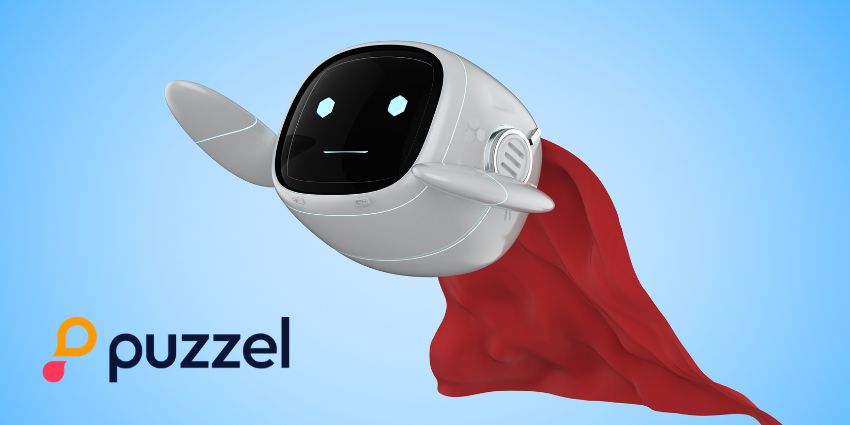Contact centers are at a turning point.
AI is everywhere, speeding up processes, automating routine tasks, and promising 24/7 coverage.
Yet customers and agents still want what technology alone can’t deliver: empathy, connection, and trust.
That’s the dilemma for leaders in 2025. The challenge isn’t whether to use AI; it’s how to weave it together with human intelligence to create experiences that actually matter.
Calabrio’s latest research highlights four priorities every contact center should be thinking about.
1. Closing the Agent Disconnect with Emotional Intelligence and AI
AI is now a near-universal presence in contact centers, with 98% of leaders admitting to using the technology.
But here’s the twist: 61% also admit customer conversations are getting harder, not easier.
Perhaps it’s because, while powerful, AI sometimes still struggles to replicate the empathy needed in emotional moments.
That work falls squarely on agents. With bots handling routine queries, human teams are left to tackle the trickiest, most emotionally charged interactions.
Yet, while leaders say they value empathy, adaptability, and resilience, their actions often don’t back it up.
Calabrio’s research underlines the problem:
- 64% of organizations aren’t prioritizing emotional intelligence or social interaction training.
- 59% fail to provide ongoing coaching for AI-driven workflows.
- Nearly a third of leaders admit their agents don’t trust AI.
In short, they talk the talk but fail to walk the walk.
Given these findings, there’s no surprise that there’s a clear disconnect between agents and leaders.
Leaders expect agents to shine where AI falls short, but many feel underprepared.
Closing that gap takes more than new tech. It means investment in coaching, feedback, and skills development that help people bring the empathy customers crave.
2. Meeting Rising Customer Expectations
Customer expectations aren’t standing still.
In the modern contact center, customers expect more personalized interactions with faster resolutions at any hour of the day.
- 40% of leaders say their customers expect round-the-clock service.
- 36% report rising demand for personalization and speed.
Little surprise, then, that most centers are leaning on AI.
A striking 83% believe AI will unlock 24/7 support, while 79% think it will elevate the contact center into a genuine strategic business driver.
However, technology alone isn’t enough.
Customer channel preferences are shifting fast. Voice still matters, but digital, self-service, and social are all on the rise.
More than half of contact centers now offer self-service, and another third are planning to roll it out.
The sticking point is integration, with just 36% of leaders saying they’ve achieved a true omnichannel setup.
For customers, that means inconsistent experiences. They don’t care about the back-end complexity – they just want things to work smoothly.
Closing that gap could be one of the biggest differentiators of 2025.
3. Rethinking KPIs in the Age of AI
While metrics like average handle time and first contact resolution still matter, they rarely tell the full story.
Contact centers are starting to broaden their KPI mix, with greater emphasis being placed upon agent wellbeing and customer sentiment.
The most common metrics now include:
- Performance assessment (86%)
- Wellbeing score (84%)
- Bot containment rate (81%)
- Average handle time (84%)
The inclusion of wellbeing scores and bot metrics points to a new reality: efficiency KPIs no longer stand alone.
As AI becomes more central, ‘bot experience’ is as important as customer experience.
As Magnus Geverts, VP of Product Marketing at Calabrio told CX Today:
“We measure too many things in the contact center; it makes it hard to see the forest through the trees.”
That comment cuts to the heart of the challenge. Leaders need to trim bloated dashboards and focus on the handful of KPIs that really drive performance, customer loyalty, and agent engagement.
4. Building an Outsourcing Strategy for Flexibility
Outsourcing is no longer a cost play – it’s a strategic necessity.
Calabrio found that 79% of contact centers now rely on external partners, and nearly a third are setting aside budget specifically for workload distribution in 2025.
If done right, outsourcing can bring agility with improved service. It helps centers manage seasonal peaks, balance workloads, and deliver consistent service without breaking budgets.
But rigid outsourcing models don’t cut it anymore.
As Geverts explained:
Contact Centers need to collaborate with their outsourcers on volumes.
“With the growing interest in outsourcing, it will be integral to give contact centers the necessary help to reach out to their vendors in real time.”
That’s the key. It’s not just about cost – outsourcing partnerships now need to be collaborative, responsive, and ready to adapt in real time. Customers expect fluid, always-on service. Anything less risks leaving them behind.
The Contact Center of the Future
AI is reshaping the contact center, but it isn’t a silver bullet.
The real winners will be the organizations that blend technology with human skill, empathy, and agility.
For 2025, that means:
- Automating the routine: Use AI to handle repetitive tasks and free up human capacity for high-value work.
- Empowering agents: Equip them with tools that provide real-time insights and support. Help them work smarter, not harder.
- Breaking down silos: Ensure insights from customer interactions are shared across departments from marketing to product to leadership.
- Measuring what matters: Track how intelligence from the contact center drives business outcomes.
Those four considerations form a roadmap for contact centers to stay competitive, resilient, and human in an AI-driven world.







